Vision 2025 - National Research Centre for Grapes
Vision 2025 - National Research Centre for Grapes
Vision 2025 - National Research Centre for Grapes
Create successful ePaper yourself
Turn your PDF publications into a flip-book with our unique Google optimized e-Paper software.
Improved production technology, pre-harvest spray techniques and handling practices <strong>for</strong> new<br />
varieties aimed at improving yield and quality parameters will help in reducing post harvest losses<br />
due to desiccation and decay and hence increase shelf life. Indigenous wine varieties and locations<br />
most suitable <strong>for</strong> these varieties and enological techniques <strong>for</strong> obtaining best quality wines will also<br />
result in unique brand identity and promote niche market. It may also provide the opportunity <strong>for</strong><br />
developing geographical indicators <strong>for</strong> Indian wines. Technologies <strong>for</strong> preparing internationally<br />
accepted raisins would boost raisin export from India.<br />
<strong>Research</strong> on bioprospecting will help in reducing the chemical loads in vineyards through<br />
bioremediation and use of biocontrol agents and biofertilizers and promote organic farming.<br />
Formulations of such microorganism will be patented.<br />
Better IT tools <strong>for</strong> managing the genetic, molecular, natural resources and data and timely advise on<br />
pest management based on weather <strong>for</strong>ecasting. All such softwares and databases will be protected<br />
through copyright and licensing.<br />
All the technical and scientific in<strong>for</strong>mation generated will be published in national and international<br />
journals in the <strong>for</strong>m of research papers, technical bulletins, folders, books, electronic media etc. <strong>for</strong><br />
wider reach to all the stake holders. Peer recognition in the <strong>for</strong>m of awards may also accrue to the<br />
results / output of all the technologies.<br />
16. OUTCOME (OVERALL IMPACTS ESPECIALLY ON SCENARIO, GDP,<br />
SOCIETAL IMPACTS, SCENARIO CHANGE AND IF NOT SITUATION)<br />
i. Protection of indigenous grape biodiversity<br />
ii. Protection of new developed varieties and farmers' rights.<br />
iii. New table and wine varieties with multiple traits, as an alternative to redundant and/or<br />
susceptible varieties.<br />
iv. Preventing nutrient abuse and improving soil health.<br />
v. Economizing input use by improving input use efficiency leading to reduction in cost of<br />
cultivation.<br />
vi. Quality improvement through judicious use of all agri inputs.<br />
vii. Sustainable grape cultivation under adverse condition and minimizing risk in cultivation.<br />
viii. Building consortium of viticulturally important microorganism.<br />
ix. Technologies <strong>for</strong> minimal chemical/organic viticulture.<br />
x. Pesticide residue free grapes and its products.<br />
xi. Increasing remuneration to grape growers, wine makers and other beneficiaries.<br />
xii. Enhancing export and contributing to the <strong>for</strong>eign exchange.<br />
xiii. Consolidating the country's image.<br />
xiv. Employment generation by supporting processing industry<br />
xv. Promoting self employment in areas of production of biocontrol agents/ predators/ parasites as<br />
well as small-scale wineries.<br />
xvi. Making Indian viticulture globally competitive in terms of resources, technologies and<br />
standards.<br />
40





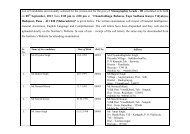
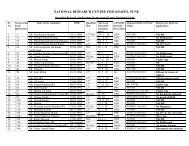

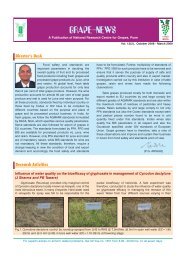

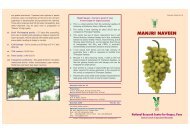
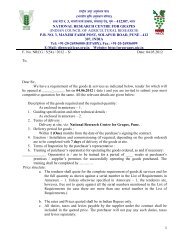



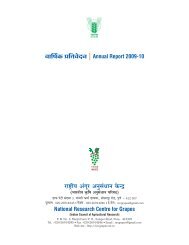
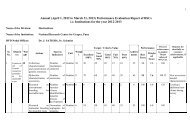
![mj]mJ{V cmcH$m{irM{ (_mBQâ¤>g) oZ`ÃÃU](https://img.yumpu.com/33367555/1/190x127/mjmjv-cmchmirm-mbqag-ozaau.jpg?quality=85)